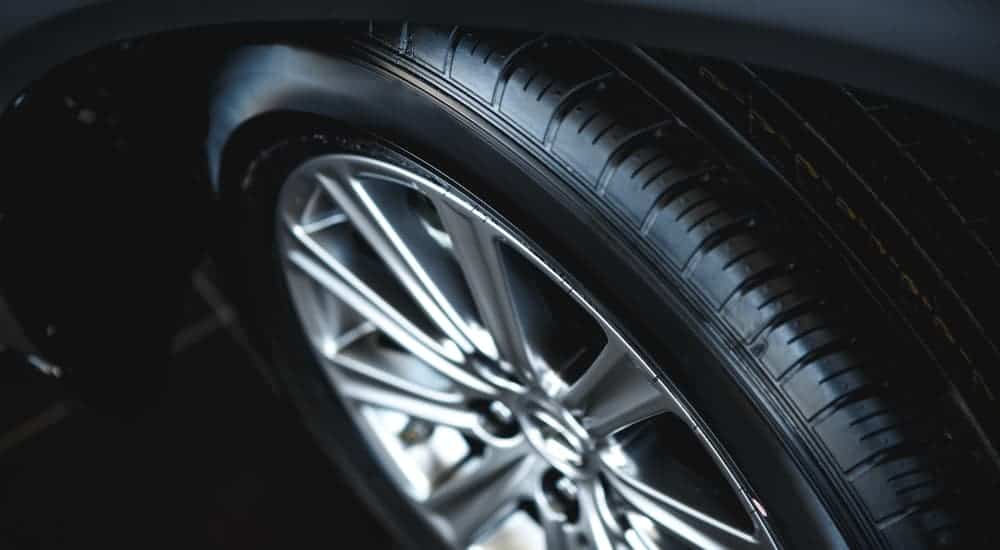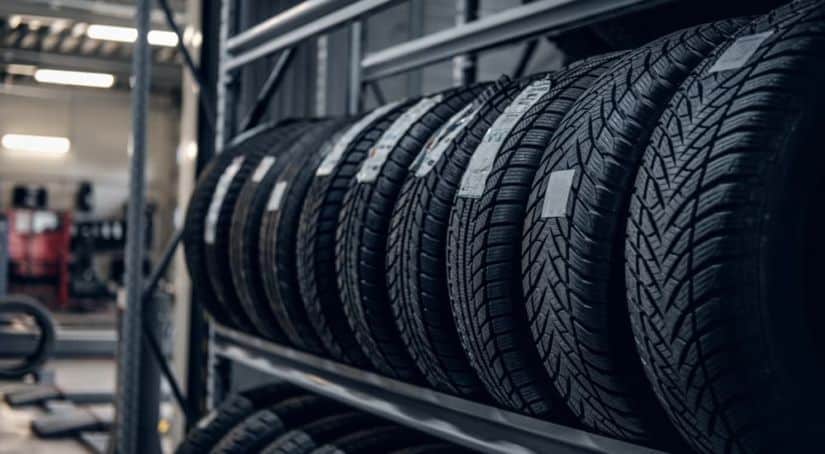When shopping for tires, the options seem endless. If you aren’t well-versed in what each tire is meant to do or what brand of tire might be best for your needs, the choices can be daunting. This run-down of tire brands may help narrow down your choices, but first, it’s important to point out a general rule of what type of tire you may need. When you hit the tire shop, you want to know exactly what to buy so you can be prepared when you walk in the door.
Different weather conditions require different types of tires. Living in the northern parts of the US where snow is common, most people purchase additional winter (or snow) tires appropriate for the season. Winter tires ensure that the specialized rubber doesn’t get stiff in the cold temperatures, and the aggressive tread handles better on snowy or icy roads. Summer tires (or three-season) tires are meant for temperatures above 40-50 degrees F, and are best on dry roads, though they should still perform well when driving through wet stormy conditions.
All-season tires are meant to handle a variety of road conditions, from wet to dry or cold to hot, but many argue all-season tires truly don’t handle as well in the snow as winter tires. The less aggressive tread on all-season tires doesn’t grip the road as well when ice or snow builds up, though there are all-season tires with more aggressive tread for winter. Despite the fact that winter tires are best in snow, drivers accustomed to wintry conditions may opt for all-season tires to avoid needing to swap tires. Off-road tires are meant for driving in dirt or gravel, and are typically for vehicles specialized for conditions like deserts or rocky areas.
One significant note: tires are important. Buying the right tire for your vehicle will matter. The wrong type of tire for your vehicle can cut down on gas mileage, reduce control of handling, increase noise in the cabin, or make one end of your vehicle behave differently than another. Knowing how to choose the right tire for your car will make a difference, so be sure to stick with the right size and style for your vehicle. From here, let’s go over the brands of tires to clarify which ones may be your best option.
Summer Tires

By summer tires, this means driving in temperatures over at least 40F. Summer tires should handle well in either wet or dry conditions, as long as the temperature stays well above freezing. If you live in a climate where freezing conditions are common or may happen unexpectedly, you may want to go with all-season tires. In this category, there are several levels of performance you could choose. To keep things simpler, the type of summer tire is ultra-high performance, which is in the mid-range of what might be available at your local tire shop.
In this category, Firestone Firehawk Indy 500 and General G-Max RS were the two front-runners of a survey for passenger cars on Tire Rack, followed by BF Goodrich g-force Sport Comp 2, Dunlop Direzza DZ102, Bridgestone Expedia S-01 in the middle range, and near the bottom is Bridgestone Potenza RE010. These are just a few of the bigger brands listed, and is not the exhaustive list on the site. If you need summer tires, though, the tires listed first were the ones reported with the best performance under both wet and dry conditions, comfort in the vehicle’s ride, and treadwear.
Light truck or SUV owners preferred Michelin Latitude Sport 3 and General Grabber UHP near the top, Continental CrossContact UHP, and Michelin Latitude Sport in the middle, then Michelin Latitude Diameris near the bottom. Again, not all brands shown are listed, and those that were not recommended are also not listed here.
Winter Tires
If you live in an area that gets snow for even a couple of months out of the year and it tends to stick on the roads, you probably want snow tires. Infrequent snowfall that doesn’t tend to build up much or at all, but temps fall below 40F will be better with all-season tires. Beginning with cars, the tires preferred for winter on the Tire Rack survey offered several categories that are narrowed down to two here. Starting with studless ice and snow, the top tire is Michelin X-Ice Xi3, followed by Bridgestone Blizzak WS80, then Goodyear Ultra Grip Ice WRT in the mid-range, and last is Dunlop Winter Maxx WM01 closer to the bottom.
Performance winter tires are another option to consider if you find that your snow tires may not be handling well on dry roads, due to their design to be used in snow. While you may not be getting as much traction when the snow or ice builds on roadways, when dry or warmer conditions occur during the winter months, the performance winter tires can be a good compromise. For this style of tire, the top brand for cars was Michelin Pilot Alpin PA4, followed by Dunlop SP Winter Sport 4D, then Goodyear Eagle Ultra Grip GW-3 in the mid-range, and Bridgestone Blizzak LM-32 near the bottom.
Studless ice and snow tires for light trucks and SUVs showed a preference for Bridgestone Blizzak DM-V2 and Michelin LTX Winter, with Michelin Latitude X-Ice Xi2 in the middle, and near the bottom is Bridgestone Blizzak W965. Performance winter tires for this same vehicle type showed Pirelli Scorpion Winter and Pirelli Scorpion Ice and Snow as the only two brands.
All-Season

Again, all-season tires can handle light snow and are made to take on just about any weather conditions. Drive with caution on all-season tires when snowy conditions abound. For cars, the preferred brand is Cooper Cobra Radial G/T, but BF Goodrich Radial T/A Spec is awarded the best handling in snowy conditions, with BF Goodrich Radial T/A next in line, and in last place is Goodyear Eagle GTII.
For light trucks and SUVs, the category of street/sport all-season tires shows Pirelli Scorpion Zero All Season Plus is the frontrunner along with Cooper Discoverer H/T Plus, both of which rated well in snow. Hankook Ventus ST RH06 fell into the middle, and Goodyear Wrangler HP All Weather is in the range closer to the bottom, not including those which had very poor ratings.
Off-Road/All-Terrain
In case you happen to be an off-road lover, light trucks and SUVs are much better when equipped with tires meant to grip gravel or loose dirt to maintain traction. The tires preferred for this type of duty are General Grabber A/TX and Pirelli Scorpion All Terrain Plus tying for the lead. BF Goodrich All-Terrain T/A KO2 is also in the upper range with Goodyear Wrangler TrailRunner AT. In the mid-range, is Hankook Dynapro AT2, with Michelin LTX A/T2 closer to the bottom of an acceptable rating. This is a long list of options, and these are cherry-picked to offer a few choices to narrow down the field for simplicity.
When purchasing tires, remember you need to check the size and weight rating as well. If you are unfamiliar with purchasing tires, you are better off going to a tire shop to have them replaced for you on-site, rather than purchasing online. Tire shops have a lot of knowledge about replacing tires properly, and you don’t want to take a chance on buying the wrong tire for your vehicle. Take the time to research before you head into the shop, so you understand the needs of your vehicle, the weight rating, and size. It will save you the headache of being pitched an up-sell of things you probably don’t need, especially if you’re not planning long-distance drives or going off-road.



